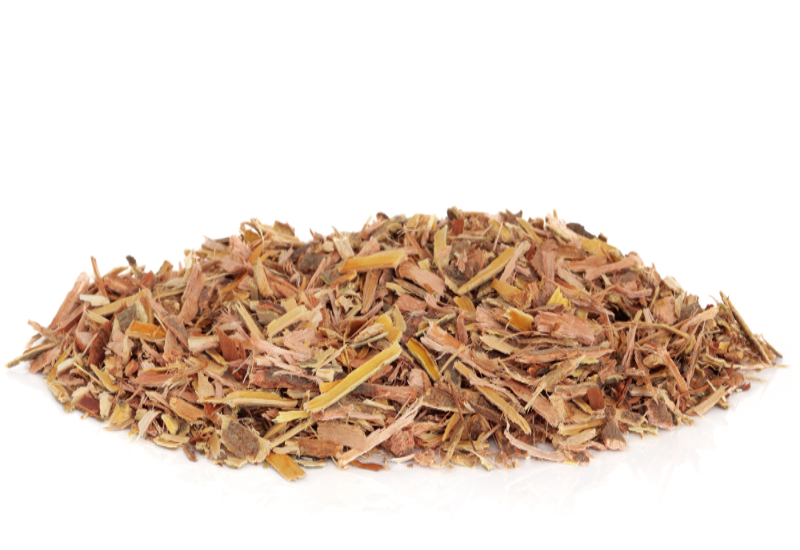Inflammation is the body’s response to an unwanted stimuli. This response is mediated primarily by the immune system. The main objective of an inflammatory...
How to Manage Chronic Pain in 4 Easy Steps.
Whether your pain begins suddenly such as after a traumatic accident, or whether it is gradual, such as related to repetitive strain on the job, it is debilitating. When pain persists, it can reduce your sleep, drain your energy, and affect your daily interactions with others as well as completing your daily tasks. Over time, this takes a toll on your mind, and you are susceptible to changes in your mood and overall outlook on life. A chronic pain condition that is increasingly diagnosed is fibromyalgia.
Standard treatments for chronic pain include initial physical therapies, pain medications, and often anti-depressants and sleep medications. As a naturopathic doctor, I have found four effective strategies to reduce the pain and turn your mind around to work in your favour.
Step One: Mend Your Mind
Since pain is so individual, the way you perceive it and relate with it on a daily and even moment-to-moment basis can make a huge impact on the actual intensity of pain that you feel. There are a few options here to have your mind work in your favour, to reduce your pain. First is building body awareness, then utilizing methods to shift your experience of pain. For example, with pain, there is tension in your muscles, and the body gets constricted or; in these areas. Often, you may find yourself with raised shoulders, or tightened jaw muscles, which you can usually consciously release to assume a more relaxed posture. By doing daily and conscious progressive muscle relaxation exercises you can develop awareness of your tense areas, and consciously release the tension, and let your body be more free, which can lead to reduced pain. Another perspective on pain awareness is to give yourself time to reflect on your pain: it is common to be completely consumed by pain, seeing it as a weight and burden, with associated anger. Consider other perspectives and decide if there are alternate ways to understand, perceive and ultimately experience your pain – perhaps you can think of it as a companion, or a coach. Beyond awareness, other specific methods that are useful include mind-body-medicine-based relaxation, breathing techniques, and meditation. Guided imagery can also be effective at shifting your mind that is guided either by yourself or with a practitioner. In my practice, I encourage associating an image to represent your pain, and then influencing that image with something you can use, such as an essential oil (eg: ginger oil, marjoram oil, etc.) for self massage, or in a bath or hydrotherapy.
Step Two: Reduce Inflammation
Where there is pain, there is inflammation. Develop an anti-inflammatory diet, and consider incorporating plant-based anti-inflammatories. Such a diet includes dark coloured vegetables, fish/flax oil and unsmoked cold-water fish (eg: sardines, salmon, mackerel, herring), less meats, and more beans, nuts, and seeds. Herbal anti-inflammatories may allow you to reduce the dose of prescription medications – examples include: bromelain, curcumin (extract from turmeric), ginger, willow bark, and boswellia.

Other approaches to eating and nutrition can play more of a role than you think. Washington USA researchers published a 2011 study showing that fibromyalgia (a form of chronic pain) patients who followed an elimination diet; which also included a nutrient-rich hypoallergenic medial food, there was a significant decrease in the level of pain and stiffness, and an increased pain tolerance. In a study conducted on people with fibromyalgia who previously did not improve with standard medical treatments, intravenous nutrients (modified Myers Cocktail) were supplied each week for eight weeks. By the end of the study, the level of pain had reduced by 60%, and the energy level improved by 80%. Other studies on intravenous micronutrient therapy (IVMT) have shown lowered levels of depression and improvement in the quality of life after treatment.
Step Three: Promote Circulation
By allowing your blood and lymphatic fluids to circulate, inflammation, and therefore pain, can be reduced. Walking, and swimming in warm water pools can be effective. Doing sea salt and Epsom salt baths can also be helpful as they also include minerals that can ease tight muscles. Another method I have used to assist people is using whole body vibration therapy (WBVT). This is a therapeutic vibrating unit that invigorates your circulation while gently stimulating contractions in your muscles throughout your body. Using the gentle yet penetrating heat of far-infrared saunas can also provide benefit.
Step Four: Neurological Support
Improving the environment of your nerves will help them calm the intensity of pain. For example, chemical neurotoxins (such as solvents, pesticides, mercury and lead and other toxic metals), often affect the nerves. Reducing such contaminants can be beneficial over time. Some herbs are also known to calm and support the nerves and may reduce pain including passionflower, hops, oat straw, California poppy, linden and lemon balm.

Related Posts
Gout
classified as a joint condition categorized alongside osteoarthritis,
rheumatoid arthritis and others. However it is uniquely different with respect
to...
Your immune system is a complex network of different cells with a range of signals that help guide the proper upkeep of your entire body. Most are familiar...
Gout classified as a joint condition categorized alongside osteoarthritis, rheumatoid arthritis and others. However it is uniquely different with respect to...
Your immune system is a complex network of different cells with a range of signals that help guide the proper upkeep of your entire body. Most are familiar...
Categories
- Allergy Relief
- Bell Lifestyle News
- Brain and Vision Health
- Depression
- Digestive Health
- Eating Healthy
- Energy Boosts
- Fitness
- Foods for Energy
- Heart and Lung Health
- Herbs
- Immune System Support
- Lifestyle
- Men's Health
- Mental
- Motivation
- Natural Remedies
- Nutrition
- Pain Relief
- Physical
- Recipes
- Relationships
- Sexual Health
- Skin and Hair Health
- Sleep Health
- Social
- Stress Relief
- Uncategorised
- Videos
- Weight Management
- Women's Health
- Your Wellness Now
Follow us on Twitter
#90 Bladder One for Women™ is a convenient one-a-day capsule for urinary tract health, featuring herbal extracts in… twitter.com/i/web/status/1…
May 2023Urinary tract infections - UTI: To treat or prevent? That is the question. Find out more about causes and treatme… twitter.com/i/web/status/1…
May 2023"How you feel is very important to how you look. Healthy equals beautiful." - Victoria Principal #womenshealth https://t.co/OPShoEbOXb
May 2023
© Copyright 2024. All rights reserved.




